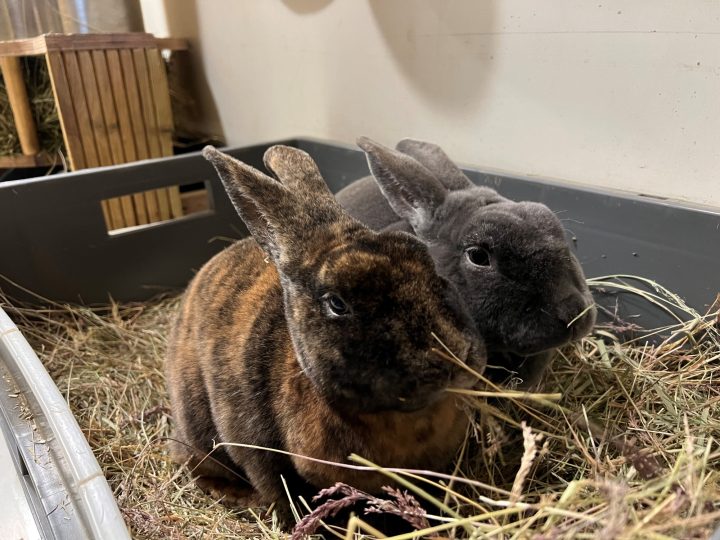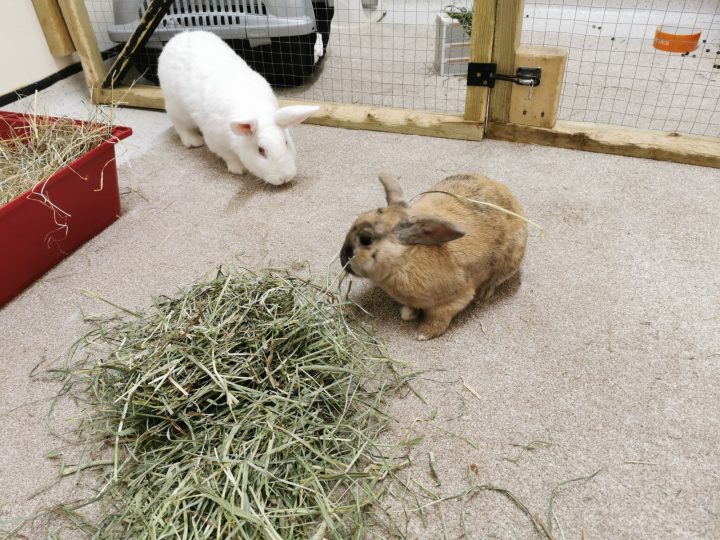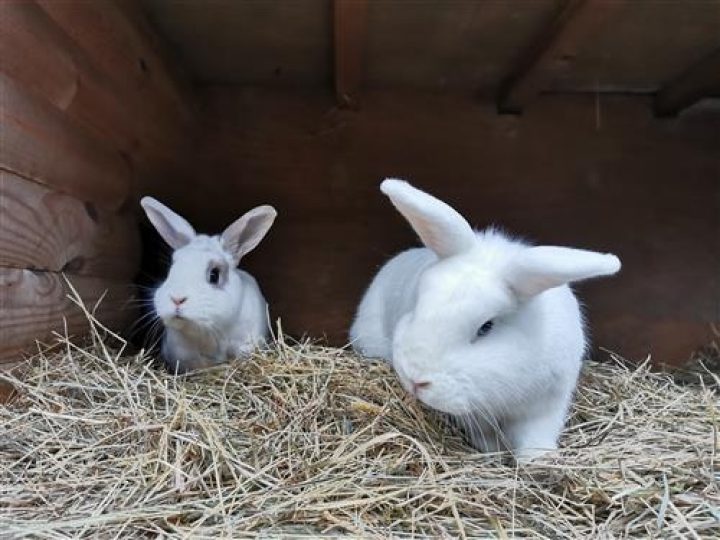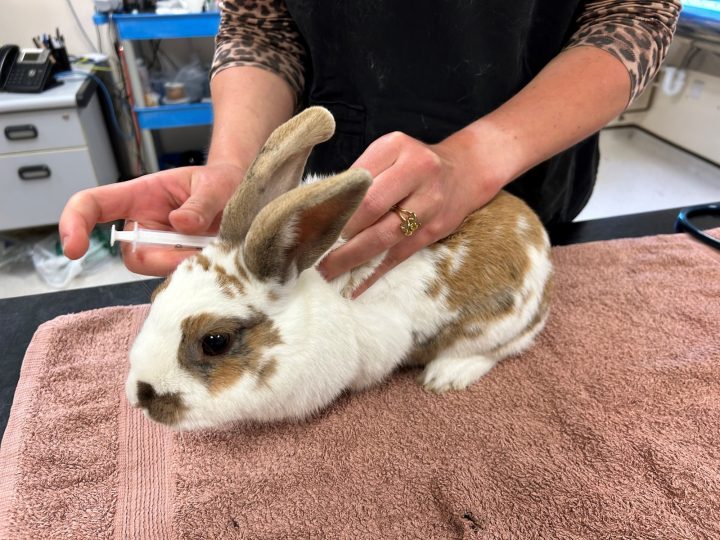Provide a suitable living environment
Our housing requirements aim to ensure the best welfare standards for rabbits and follow the Rabbit Welfare Association and Fund (RWAF) guidelines. Our team are happy to offer advice when purchasing or adapting your set-up to provide the best home before adopting.
Outdoor rabbits need constant access to a secure, predator-proof enclosure measuring at least 10ft x 6ft x 3ft (equivalent of 60sqft). Within this enclosure there should be an indoor area measuring a minimum of 6ft x 2ft x 2ft where they can hide from predators and shelter from poor weather. This could be provided in the form of a hutch, shed or Wendy house. The indoor area should be inside the run or permanently attached; rabbits are crepuscular meaning they are most active at dawn and dusk and need to be able to access their exercise areas during this time. All external doors should be locked using bolts, as swivel clips or latches are not predator proof.
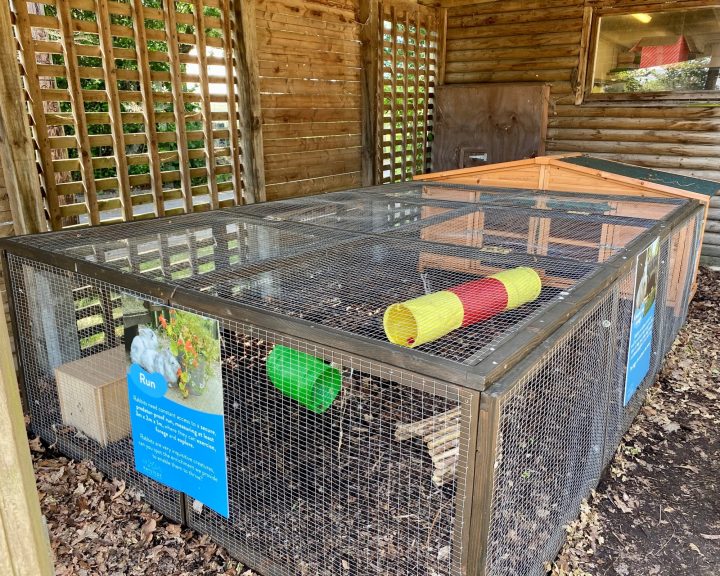
Provide a suitable living environment
Our housing requirements aim to ensure the best welfare standards for rabbits and follow the Rabbit Welfare Association and Fund (RWAF) guidelines. Our team are happy to offer advice when purchasing or adapting your set-up to provide the best home before adopting.
Outdoor rabbits need constant access to a secure, predator-proof enclosure measuring at least 10ft x 6ft x 3ft (equivalent of 60sqft). Within this enclosure there should be an indoor area measuring a minimum of 6ft x 2ft x 2ft where they can hide from predators and shelter from poor weather. This could be provided in the form of a hutch, shed or Wendy house. The indoor area should be inside the run or permanently attached; rabbits are crepuscular meaning they are most active at dawn and dusk and need to be able to access their exercise areas during this time. All external doors should be locked using bolts, as swivel clips or latches are not predator proof.
